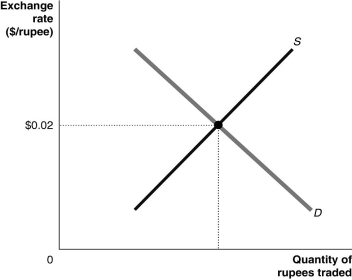Figure 15.8  Alt text for Figure 15.8: In figure 15.8, a graph illustrates the quantity of rupees traded against the exchange rate.
Alt text for Figure 15.8: In figure 15.8, a graph illustrates the quantity of rupees traded against the exchange rate.
Long description for Figure 15.8: The x-axis is labelled, quantity of rupees traded.The y-axis is labelled exchange rate, Canadian dollar against the rupee, with value 0.02 marked.A straight line supply curve, S, slopes up from the bottom left corner to the top right corner.A straight line demand curve, D, slopes down from the top left corner to the bottom right corner.Curves S and D intersect at point with a y-axis value of 0.02, which is connected to the corresponding y-axis value with a dotted line.
-Refer to Figure 15.8.Which of the following is true?
A) Canadian imports are more expensive at exchange rates greater than $.02/rupee than at the equilibrium exchange rate.
B) The rupee is overvalued at exchange rates less than $.02/rupee.
C) To achieve an exchange rate greater than $.02/rupee, the Reserve Bank of India must buy surplus Canadian dollars with rupees.
D) Indian exports to Canada are more expensive at exchange rates greater than $.02/rupee than at the equilibrium exchange rate.
E) Indian interest rates will be lower than Canadian interest rates if the exchange rate is greater than $0.02/rupee.
Correct Answer:
Verified
Q159: A Big Mac costs $4.07 in Canada
Q160: Purchasing power parity is the theory that,
Q161: Figure 15.9 Q162: Figure 15.8 Q163: Figure 15.10 Q165: If a country sets a pegged exchange Q166: Pegging a country's exchange rate to a Q167: Compared to a situation in which there Q168: Figure 15.8 Q169: The Danish currency, the krone, is pegged Unlock this Answer For Free Now! View this answer and more for free by performing one of the following actions Scan the QR code to install the App and get 2 free unlocks Unlock quizzes for free by uploading documents![]()
![]()
![]()
![]()

